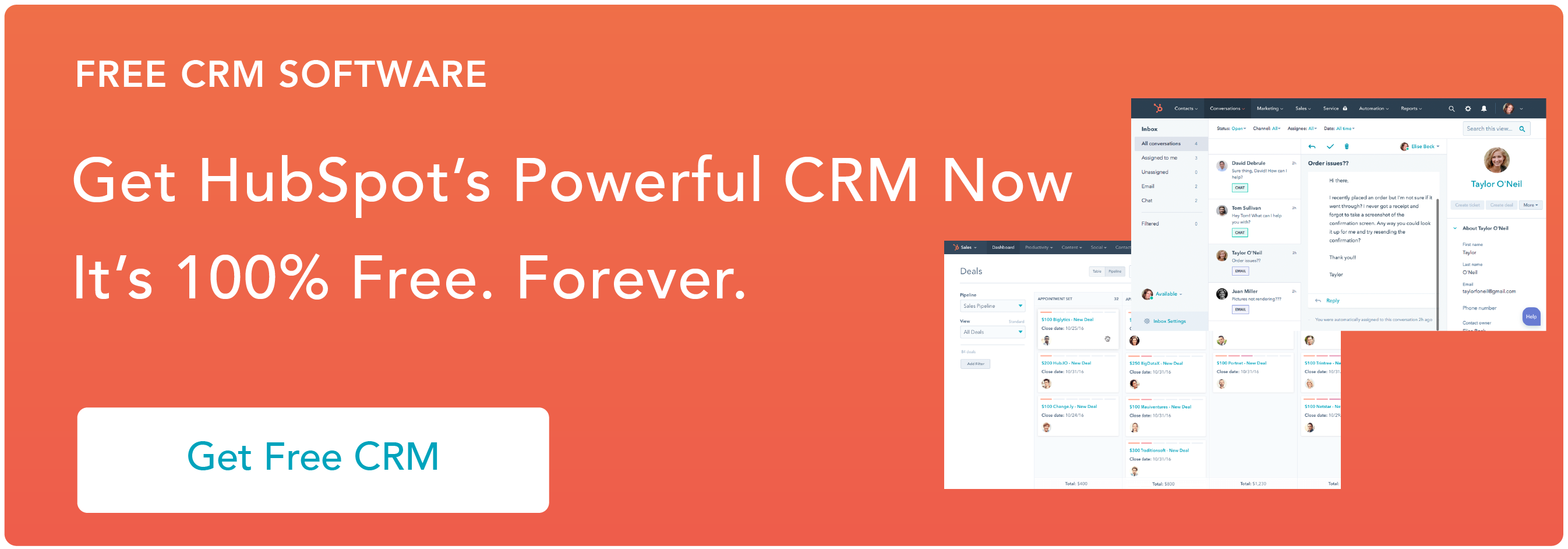Your CRM manages customer and lead relationships and provides context about their challenges, goals, stage of the buyer’s journey, past conversations, purchase history, and more.
If you’re a HubSpot user, your CRM is also connected with your sales, service, marketing, and operations software. Meaning your CRM can power your entire business.
But what about your online business and your need for conducting payments? Can a CRM help with that?
With a CRM like HubSpot (or one of the other platforms we'll review below), the answer is yes.
CRM Payments
Rather than using a bunch of disconnected tools across your business, CRM payments tools connect ecommerce, payments, payment processing, customer data, and ecommerce data in one place. This allows you to offer leads and customers streamlined and delightful buying experiences.
Integrating Payments and CRM
By integrating payments and CRM, you’ll experience a number of benefits depending on which tool you use — here are some examples.
- Give customers the ability to purchase and pay via your website, email, or chat.
- Customize the checkout process with relevant contact details automatically saved and pulled from your CRM.
- Set up automated workflows and triggers related to completed or unfulfilled payments, cart abandonments, and more.
- Add payment links (recurring or one-time) to your quotes so customers can transact at that moment.
- Allow customers to pay invoices via their online portals.
- Integrate your CRM, ecommerce business, and other tools for an efficient and seamless user experience.
- Provide different teams within your business (e.g. sales, marketing, and service) with the contact and payment data they need about every customer (including purchase history and payment activity).
How does integrating payments and CRM benefit your customers?
Now you might be wondering how a CRM with built-in payments is beneficial to your leads and customers.
A CRM with built-in payments improves the buyer’s journey for your leads and customers. It provides a sales rep with the information necessary to personalize and tailor a pitch, quote, proposal, or workflow to an individual by pulling from account data, previous conversations, goals, past purchases, challenges, and more.
It also allows customers to make payments in real-time while talking with a sales rep, reviewing a quote, or clicking a shareable one-time or recurring payment link.
This means less time and effort are necessary by your customers when trying to make a purchase.
A CRM with built-in payments also often gives customers the ability to pay via a method of their choice in a secure way. For instance, HubSpot Payments comes with layers of security meant to protect payment information as well as encrypt and tokenize buyer payment credentials so unauthorized people aren't able to access a customer's information.
CRM Payment Processing
Depending on which CRM you implement on your team, payment processing may look a bit different – but no matter which tool you use, CRM payment processing is how your system handles and completes credit and debit card transactions.
Again, these features may look different based on which CRM you use, but here are some examples of the benefits of CRM payment processing.
- Get paid faster and with lower costs for your business.
- Offer customers the ability to pay using their preferred method.
- Give customers the option to pay from your website, email, or chat.
- Ensure all payments remain secure.
- Set up automatic CRM payments.
- Process a large number of payments and orders.
- Reduce the chances of payment errors by sticking to only one system and no manual data entry.
- Collect payment when a customer accepts a quote, not after waiting several weeks to receive a check in the mail.
CRM Auto Payments
If you offer a service, your customers will likely have recurring payments. You can set up CRM auto payments, or recurring payments as well as other automatic and personalized workflows related to your customers’ payments.
With a billing system that is directly integrated with CRM, you can set up recurring payments, determine payment frequency, add custom start and end dates, and pause payments when necessary. Recurring payments can be accessed in the contact record.
Many customers love the ability to set and forget payments. By accepting automatic payments, you can cater to those who want to take advantage of the convenience that many customers look for in a vendor.
And for you, the benefits range from greater predictability in your cash flow, increased customer retention, and more time available to spend on tasks that aren't related to prepping invoices.
CRM With Built-In Payments
Now let’s review three CRM systems that offer built-in payments.
1. HubSpot payments

Best CRM for B2B businesses that want secure and shareable one-time and recurring payments.
Price: Credit and debit cards: You pay a flat 2.9% of the transaction amount.
ACH payments: you pay 0.5% of the transaction amount, capped at $10 per transaction
HubSpot payments gives you the ability to add a one-time or recurring payment link inside of the personalized quote that you send a customer. So once your customer receives your estimate, they can transact immediately through the quote.
HubSpot's built-in payments are also unique because they're powered by your CRM. So your customer's profile is automatically updated for you with things like new contact information, communications, quote details, previous payments, payment visualizations, and more.
Having CRM and payments under one roof makes quote personalization simple. It also means you can automate workflows related to where your customers are in the payment process. As a result, you'll increase team-wide productivity while also making it easier for reps to delight more customers.
Pro Tip: Use HubSpot payments to delight more customers with natively built CRM-powered payments.
2. Keap

Best CRM for small businesses that want ecommerce, invoicing, and payment processing.
Price: Start for free and then pay monthly or annually based on your number of contacts and users.
Keap offers CRM, ecommerce, invoicing, and payment processing. You can personalize the platform as needed and integrate with your current software to avoid the need for additional tools. Keap offers several payment processors so your team can invoice and receive payment all via one location.
Send personalized quotes directly to your customers and give them the option to pay from within the quote. Since payments and CRM are connected, you can open a contact record and set up recurring payments — then, you can set up payment start and end date, pause payments, and determine recurring payment frequency.
The tool works well for online stores since it's capable of managing high volumes of payments and orders.
3. Zoho

Best for ensuring you're staying tax compliant while billing across the globe.
Price: Zoho plans range from free to $249/organization/mo, billed annually. There are also custom plans for enterprise businesses.
Zoho offers a cloud-based sales CRM with subscription billing software. The tool allows you to manage subscriptions, automate recurring billing, and ensure your invoices are all tax-compliant, no matter where you're sending them.
Set up your billing cycles and payment frequencies for customers and securely store customer credit card details for easy recurring payments.
Collect payment both online and offline through a number of payment gateway options such as PayPay or Stripe. Zoho also helps you give your customers access to information about their subscriptions via a self-service portal.
Grow Better With CRM Payments
CRM payments have the power to streamline the sales cycle for your reps and increase productivity. They also help you delight more customers with payments that are quick and easy.
Payments






![All Types of Payment Methods Business Owners Need to Know [+Data]](https://53.fs1.hubspotusercontent-na1.net/hubfs/53/typesofpayment.webp)
.webp)


![ACH API: What it is + How to Use it [+ Who Should Not]](https://53.fs1.hubspotusercontent-na1.net/hubfs/53/ach-api.jpg)
![What is ACH credit [+ Is It Safe to Use?]](https://53.fs1.hubspotusercontent-na1.net/hubfs/53/what-is-ach-credit.jpg)

